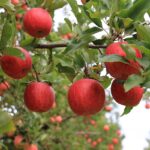Australian govt lends wings to fruit fly control research

The Australian Government has launched a new plan to control fruit fly populations and improve market access protocols, in the form of a comprehensive 56-page document prepared by Plant Biosecurity CRC.
The National Fruit Fly Research, Development and Extension Plan aims to tackle issues ranging from the prevention of exotic pests' entering the country to finding treatments to replace the agrichemicals dimethoate and fenthion as they are phased out.
"The combination of chemical withdrawal and loss of area freedoms has placed huge economic and management imposts on producers of fruit fly susceptible commodities in nearly all parts of Australia," the plan says.
"The profitability, and indeed sustainability, of a number of horticultural sectors are threatened and both emergency and long term responses are required to ensure that fruit fly does not permanently limit the Australian horticultural sector.
The report also warns about the expected impacts of predicted climate change scenarios on fruit fly populations, whereby flies currently restricted to the tropics would move south and flies in temperate zones may increase in abundance with extended active seasons.
Moreover, the report authors expect Tasmania and New Zealand will be under much greater risk of fruit fly invasion, while northern European countries may become more fruit fly aware.
"While pesticides, if they are available, remain a preferred control option for many growers, experience from Europe and North America is clearly illustrating that within the next twenty years traditional pesticides will either be entirely banned, or used as only one component of more complex, integrated strategies," the report says.
"Preparedness for climate change will involve the generation of new control and market access datasets for the tropical species, and better modelling of the distributions of all species."
While the document includes some challenging long-term scenarios, its stated vision is optimistic with the plan divided into two key sections: one that identifies the industry's RD&E needs to control fruit fly now and in the future, while the second half details specific recommendations for investment areas.
"Fruit flies are not a constraint to sustainable production or a significant barrier to national and international market access," the report says.
The authors said the Draft National Fruit Fly Strategy from 2008 remained current "in most respects" but the urgency of the fruit fly problem had become significantly greater.
The authors also underscore particular attention to preventing the entry of Oriental fruit fly, "arguably the world's worst fruit fly pest", which currently exists in nearby Papua New Guinea and Indonesia.
"Both Australian and relevant state governments have placed emphasis on the development of agriculture in tropical Australia. Fruit flies will impact negatively on tropical horticulture, while a dramatically enlarged northern production will offer a 'stepping-stone' for the entry of exotic fruit flies," the report said.
"RD&E for tropical and exotic fruit flies thus increases in importance."
Minister for Agriculture Barnaby Joyce welcomed the plan which promises to enhance Australia’s capability to manage pests that threatened parts of the country's AUD$9.3 billion (US$7.2 billion) a year horticulture industry and up to $795 million (US$615 million) in horticultural exports.
"The National Fruit Fly Research Development and Extension Plan builds on the significant investment by industry and governments on operational, regulatory, research and development and market access programmes to manage fruit fly," Joyce said in a release.
"Fruit fly is a significant pest. Management of this pest will be central to our horticulture industry’s continued supply of quality produce to domestic and international markets.
"This is a 20 year plan to manage the risks of exotic fruit fly species entering Australia, reducing potential impacts to production and improving market opportunities."
Joyce said this was the first time the country had a national program of this kind that identified priority projects and put growers, researchers and regulators at the forefront on fruit fly management.
"Regulators and government authorities benefit from more tools for negotiating national and international market access with Australia’s producers benefiting in the longer term with RD&E to improve on-farm productivity and reducing barriers to trade in these markets," he said.
"The threat of plant pests and diseases will continue to challenge our producers and the costs of eradication and recovery is a financial impact some producers cannot afford."













































